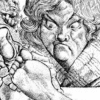
Irish
Cath Maige Tuired: The Battles of the Irish Gods
Cath Maige Tuired: The Battles of the Irish Gods
Irish legends claim that their gods were one of many groups to settle the island and two great battles were fought to seize control from hostile groups. Is there any truth to the legends of Ireland’s famous battles, thought?
The Battles of Moyturra, written as Maige Tuired or Magh Tuireadh in Irish, established the rule of Ireland’s greatest rulers.
The Tuatha De Dannan are generally interpreted as the gods of Gaelic Ireland, but the stories of Moyturra show them as one of many waves of invaders. When they arrived on Ireland’s shores, they encountered two other groups and fought for many years to win control of the land.
The Battles of Moyturra were traditionally considered to be a part of Irish history, but is there any truth to the tales of how the Tuatha De Dannan won the kingship of Ireland?
The Two Battles of Moyturra
Irish mythology is often divided into a series of cycles reflecting different periods of the island’s supposed history. The Mythological Cycle deals with the history of Ireland’s invasions and conquests by a series of god-like races.
Two sagas, both known as the Cath Maige Tuired, tell the story of the most legendary of these conquests. The two Battles of Moyturra, as they’re known in English, led to the conquest of Ireland by the Tuatha De Dannan.
Usually regarded as the traditional gods of Gaelic Ireland, the Tuatha De Dannan were not native to the island.
Before the Tuatha De Dannan arrived, Ireland was the home of two races. The Fomorians had seized control from the Greek children of Nemed, whose descendants had returned as the Fir Bolg.
Thirty years after the Fir Bolg won control of Ireland, the Tuatha De Dannan arrived from the North. When they landed, they burned their ships to ensure that they would never leave their new land.
Bres, representing the Tuatha De Dannan, approached the Fir Bolg with an offer. They could go to war or the Fir Bolg could choose peace and cede half the island to the newcomers.
Eochaid mac Eirc, the king of the Fir Bolg, refused to give up his land. He chose battle, and after allowing time for both sides to prepare the two forces met near Conmaicne Cuile Tolad in what is now County Mayo.
The Tuatha De Dannan won the battle easily, although not without a notable casualty. Their king, Nuada, lost his hand which, according to their traditions, made him unfit to rule.
The Fir Bolg were given the same choice again with a third option, to leave Ireland entirely. Once again, they chose to fight for their land.
Sreng, the champion of the Fir Bolg, challenged Nuada to meet him in single combat. The king agreed, but under the condition that Sreng fight with one hand bound to make the contest fair.
Sreng refused, but the Tuatha De Dannan were impressed. They offered to let the Fir Bolg keep one province, so Connacht became the home of the Fir Bolg.
The first Battle of Moyturra ended with the Tuatha De Dannan in control, but their rule would be short-lived.
The Fomorians, who had been under the control of the Fir Bold for thirty years, rose up against the new rulers. Without the command of Nuada, the Tuatha De Dannan lost control of their new lands and became oppressed subjects of the Fomorians.
Bres had been chosen to lead the Tuatha De Dannan after Nuada lost his hand, but the new king showed no love for his people. His father was Elatha, the Fomorian king, and he sided with them instead of his mother Eriu’s people.
Bres allowed the Fomorians to completely subjugate the Tuatha De Dannan. They did the most menial labor, paid heavy tribute, and were punished harshly for any perceived offense against Elatha.
Unable to endure Bres’s rule, Nuada went to Dian Cecht, the physician. Dian Cecht made a new hand of silver for the former king, making him whole so he could regain his throne.
Bres was banished from the company of the Tuatha De Dannan and fled to his father’s people. Elatha refused to help him regain the throne, but Balor of the Evil Eye was eager to make war against the Tuatha De Dannan.
While Bres got assistance from a new ally, so too did the Tuatha De Dannan. Lugh, another child born of a union between the two groups, joined the Tuatha De Dannan and was placed in charge of their war preparations because of his many talents.
The Second Battle of Moyturra was fought between the Fomorians under Balor of the Evil Eye and Lugh’s Tuatha De Dannan.
Nuada was killed in the fight and the Tuatha De Dannan were almost destroyed by Balor’s magical eye. Lugh, Balor’s own grandson, used a sling to blind the Fomorian leader.
Lugh’s shot was so powerful that Balor’s evil eye crashed through the back of his skull. Without their commander and his magic, the Fomorians fell into chaotic disorder.
In the aftermath of the battle, Bres was found alive among the destruction. He begged for his life and the Tuatha De Dannan agreed to spare him as long as he taught them how to plant crops and harvest them.
Lugh became the next king of the Tuatha De Dannan and was remembered as one of the best rulers in history.
The Fomorians continued to live on the edges of Ireland, but never again posed a real threat to the Tuatha De Dannan. The gods of Ireland ruled for many years until the human Milesians arrived and forced them to retreat into underground Sidhes.
My Modern Interpretation
For centuries, the legends of Ireland’s waves of invasions were thought to have been rooted in fact.
While the Tuatha De Dannan were no longer seen as gods after the island’s conversion to Christianity, they were still thought to have represented the pre-Celtic people of Ireland.
The Milesians who eventually forced the Tuatha De Dannan underground were interpreted as people from Iberia. Their name came from Mil Espaine, from the Latin Miles Hispaniae, “Soldiers of Spain.”
They were interpreted as continental Celts who crossed to Ireland and defeated an earlier Germanic group that had lived there. It was believed that the Fir Bolg, Fomorians, and earlier races of Ireland had been previous peoples who were wiped out after subsequent invasions.
Later historians, however, found significant issues with such a literal interpretation of the Irish Mythological Cycle.
As with many European myths, the legends of Ireland were not written until well into the Christian era. The influences of the Christian tradition are, in some cases, obvious enough to make a literal interpretation of the stories impossible.
According to the most complete collection of surviving invasion legends, for example, the Nemedians and the two races that preceded them were direct descendants of the Biblical Noah.
A prologue to the collection claims that the ancestors of the Gaelic people, the Gaels, had fled Egypt at the same time as Moses and the Israelites.
A later interpretation has concluded that much of the Mythological Cycle’s invasion narrative fits into distinctly Christian themes.
This is common in the medieval recordings of pagan cultures. By linking the stories to those of their own tradition, Christian writers hoped to undermine pagan themes and create a sense of connection to Biblical tales.
They also undermined paganism by recasting the old gods as human characters.
The Tuatha De Dannan were not immortal, but the Cath Maige Tuired and other stories downplay their supernatural abilities. Most historians believe that original stories if they existed, would have shown much more evidence of the Tuatha De Dannan’s powers.
The legends of Ireland’s battles between legendary races were, therefore, dismissed by many as complete works of fiction, largely invented by writers who did not even believe in the pagan characters they chronicled.
Another view has emerged, however, that shows a possible middle ground for these explanations.
Some historians now believe that, while specifics of the legends are definitely ahistorical, some aspects of the Tuatha De Dannan’s conflicts with other Irish races may have some basis in history.
Archaeology has found evidence that may support multiple waves of migration to Ireland over the course of roughly five hundred years. Additionally, genetic research has shown that many Irish people display genetic markers that are not consistent with a single shared origin.
While the idea that the races that preceded the Celts came from Greece or Egypt is an invention of medieval writers, the early Celtic people who arrived in Ireland may have likely encountered earlier arrivals whose culture was similar, but not identical, to their own.
These people would have likely, as the stories suggest, fought for control of the land. But the stories of the Cath Maige Tuired also show another outcome.
Several key figures in the story, including Bres and Lugh, were the children of mixed marriages between the Fomorians and the Tuatha De Dannan. Rather than obliterating earlier settlers as the histories commonly said, the new arrivals in Ireland would likely have intermarried with the other groups.
Gaelic culture was formed not by a single tribe of Gaels, but by the exchanges between various Celtic and Germanic groups that settled Ireland. Even if the stories were greatly changed in later eras, the legends of Ireland’s founding battles may still contain a sliver of historical truth.
In Summary
In Irish legends, the Cath Maige Tuired were two battles the Tuatha De Dannan wages for control of the island.
Usually regarded as the pagan gods of Ireland, the Tuatha De Dannan arrived to find that the land was already inhabited by two groups.
The Fir Bolg, descendants of Greek settlers, controlled the island. The First Battle of Moyturra resulted in a victory for the Tuatha De Dannan and the Fir Bolg were consigned to Connacht.
The Tuatha De Dannan’s king, Nuada had lost his hand in the battle. Considered unfit to rule as a result, he passed the crown on to his nephew, Bres.
Bres, however, was only half Tuatha De Dannan. His father was the king of the Fomorians, the other race that lived in Ireland.
Bres helped his father to subjugate and humiliate the Tuatha De Dannan. After seven years of this, Nuada had a new hand made from silver so he could reclaim his throne.
Bres appealed to the Fomorians and got the assistance of Balor of the Evil Eye to fight to regain power. The Tuatha De Dannan, meanwhile, recruited the half-Fomorian Lugh as their new commander.
The two groups met at the Second Battle of Moyturra. Nuada was killed, but Lugh heroics killed Balor and routed the enemy Fomorians.
The Tuatha De Dannan ruled Ireland unopposed for 150 years until the Milesian Celts arrived from Spain and forced them underground.
For many centuries, the legends of Cath Maige Tuired and Ireland’s invasions were taken as historical fact. Obvious flaws in the story and Christian influence, however, led historians to abandon this traditional view entirely.
Now, however, some believe that the truth may lie somewhere in the middle. The stories are almost certainly not factual, but they made reflect older tales of Celtic groups arriving in Ireland over a long period of time.









